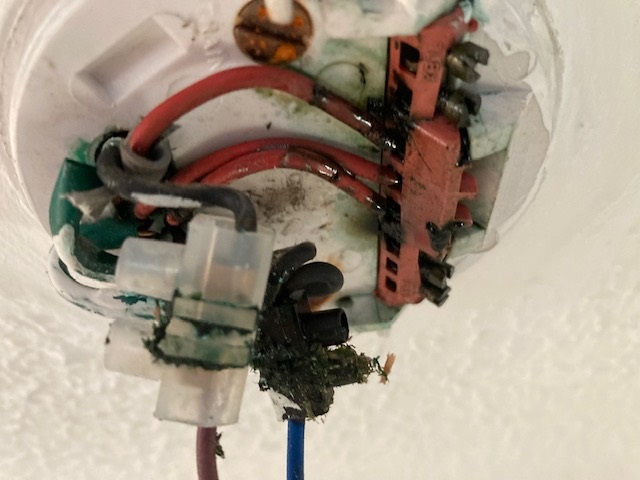Hi guys.
I came across the dreaded green goo yesterday on a domestic EICR in a rental. I have coded it as a C2. I believe that is correct from what i have read on-line re can cause over heating if it causes an arc at the terminals. I have also said the general guidance is to rewire although it may be able to be cleaned off and monitored with regular inspections. Any thoughts please.
I know this has been discussed many times on here but couldn't get anything up on a search. Cheers
Gary


 Thanks Alan. The Prysmian article was the one that i read and based my code and advice on. The insulation resistance readings were not too bad to be honest,(about 12 megohms) but the terminals in the ceiling roses are a mess.
Thanks Alan. The Prysmian article was the one that i read and based my code and advice on. The insulation resistance readings were not too bad to be honest,(about 12 megohms) but the terminals in the ceiling roses are a mess.